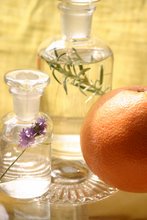Potentially Universal Mechanism Of Aging Identified: "ScienceDaily (Nov. 27, 2008) —
Researchers have uncovered what may be a universal cause of aging, one that applies to both single cell organisms such as yeast and multicellular organisms, including mammals. This is the first time that such an evolutionarily conserved aging mechanism has been identified between such diverse organisms...The mechanism probably dates back more than one billion years. The study shows how DNA damage eventually leads to a breakdown in the cell's ability to properly regulate which genes are switched on and off in particular settings...Researchers have discovered that DNA damage decreases a cell's ability to regulate which genes are turned on and off in particular settings. This mechanism, which applies both to fungus and to us, might represent a universal culprit for aging...scientists have know that a group of genes called sirtuins are involved in the aging process. These genes, when stimulated by either the red-wine chemical resveratrol or caloric restriction, appear to have a positive effect on both aging and health...Sinclair and colleagues in the Massachusetts Institute of Technology lab of Leonard Guarente found that a particular sirtuin in yeast affected the aging process in two specific ways—it helped regulate gene activity in cells and repair breaks in DNA. As DNA damage accumulated over time, however, the sirtuin became too distracted to properly regulate gene activity, and as a result, characteristics of aging set in..."For ten years, this entire phenomenon in yeast was considered to be relevant only to yeast," says Sinclair. "But we decided to test of this same process occurs in mammals."...Oberdoerffer found that a primary function of sirtuin in the mammalian system was to oversee patterns of gene expression (which genes are switch on and which are switch off). While all genes are present in all cells, only a select few need to be active at any given time. If the wrong genes are switched on, this can harm the cell. (In a kidney cell, for example, all liver genes are present, but switched off. If these genes were to become active, that could damage the kidney.) As a protective measure, sirtuins guard genes that should be off and ensure that they remain silent. To do this, they help preserve the molecular packaging—called chromatin—that shrink-wraps these genes tight and keeps them idle...The problem for the cell, however, is that the sirtuin has another important job. When DNA is damaged by UV light or free radicals, sirtuins act as volunteer emergency responders. They leave their genomic guardian posts and aid the DNA repair mechanism at the site of damage.During this unguarded interval, the chromatin wrapping may start to unravel, and the genes that are meant to stay silent may in fact come to life...For the most part, sirtuins are able to return to their post and wrap the genes back in their packaging, before they cause permanent damage. As mice age, however, rates of DNA damage (typically caused by degrading mitochondria) increase. The authors found that this damage pulls sirtuins away from their posts more frequently. As a result, deregulation of gene expression becomes chronic. Chromatin unwraps in places where it shouldn't, as sirtuin guardians work overtime putting out fires around the genome, and the unwrapped genes never return to their silent state... "We then began wondering what would happen if we put more of the sirtuin back into the mice," says Oberdoerffer. "Our hypothesis was that with more sirtuins, DNA repair would be more efficient, and the mouse would maintain a youthful pattern gene expression into old age."That's precisely what happened. Using a mouse genetically altered to model lymphoma, Oberdoerffer administered extra copies of the sirtuin gene, or fed them the sirtuin activator resveratrol, which in turn extended their mean lifespan by 24 to 46 percent...
"According to this specific mechanism, while DNA damage exacerbates aging, the actual cause is not the DNA damage itself but the lack of gene regulation that results," says Oberdoerffer. "Lots of research has shown that this particular process of regulating gene activity, otherwise known as epigenetics, can be reversed—unlike actual mutations in DNA. We see here, through a proof-of-principal demonstration, that elements of aging can be reversed.""But is the picture of sirtuins more complicated?
Deleting 'Anti-Aging' Gene From Yeast Greatly Lengthens Life Span: "ScienceDaily (Nov. 18, 2005) —
A counterintuitive experiment has resulted in one of the longest recorded life-span extensions in any organism and opened a new door for anti-aging research in humans...The result was a dramatically extended life span - up to six times longer than normal - when the SIR2 deletion was combined with caloric restriction and/or a mutation in one or two genes, RAS2 and SCH9, that control the storage of nutrients and resistance to cell damage..."DogVitals natural antioxidant supplement - helping dogs health from the inside out


No comments:
Post a Comment